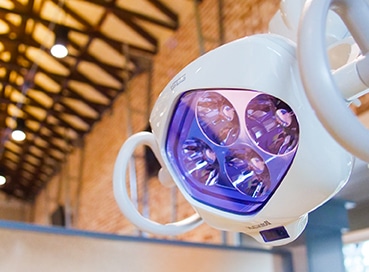The Best Guide To Orthodontics
Table of ContentsOrthodontics Fundamentals ExplainedThe Best Guide To Orthodontics6 Easy Facts About Orthodontics ShownThe Orthodontics DiariesThe Best Strategy To Use For OrthodonticsGetting My Orthodontics To WorkThe 2-Minute Rule for OrthodonticsThe Main Principles Of Orthodontics
You might really feel some discomfort for a while when your dental braces are initially placed on and when they are changed. It will certainly take a little time to get utilized to your dental braces and they can trouble your lips and cheeks. If this happens, a relief wax can be related to your braces.It is very important to brush your dental braces in addition to the front, back and chewing surface areas of the teeth. Your dental practitioner or orthodontist will certainly offer you suggestions on exactly how to comb and on exactly how to floss making use of floss threaders. After flossing, roll it up in a small ball and put it in the garbage.
The Ultimate Guide To Orthodontics

Troubles that are not taken care of can trigger the treatment to last longer. The traditional steel dental braces, there are tooth-coloured ceramic dental braces that are less visible. Braces and elastics can likewise be multicoloured.
The Buzz on Orthodontics
It overviews the direction of tooth activity and jaw development in a person that is still growing. Orthodontics. There are various kinds of headgear and they might be used throughout any type of component of the orthodontic treatment. Your orthodontist or dentist will reveal you just how to place on the headgear and tell you for how long to use it each day
They might need to be put on constantly or component of the time. Tooth elimination might be needed if your teeth are crowded or if a tooth is badly out of setting. Jaw surgical procedure (or orthognathic surgical treatment) might be needed when there are major differences in the size or setting of the top and reduced jaws.
Getting The Orthodontics To Work
An orthodontist is a dental professional trained to detect, stop, and treat teeth and jaw irregularities. Orthodontists work with individuals of all ages, from children to adults.
Orthodontic residency programs offer extensive, focused direction for oral experts. They concentrate on two locations: Just how to properly and safely relocate teeth How to appropriately direct growth in the teeth, jaw, and faceOnce an orthodontist has actually completed training, they have the alternative to end up being board certified.
Some Known Questions About Orthodontics.

If you have only small malocclusion, you might be able to use clear dental braces, called aligners, rather of traditional braces. Some individuals require a headgear to help move teeth right into line with pressure from outside the mouth. After dental braces or aligners, you'll need to use a retainer. A retainer is a custom gadget that keeps your teeth in position.
What Does Orthodontics Do?
They're usually utilized on children. They can produce extra room in the mouth without having to draw teeth. Orthodontics. If you have a severe underbite or overbite, you might need orthognathic surgical procedure (additionally called orthodontic surgical procedure) to lengthen or reduce your jaw. Orthodontists make use of cables, medical screws, or plates to sustain your jaw bone.
Throughout your first orthodontic assessment, you'll likely have: An oral examPhotos taken of your face and smileDental X-raysPanoramic (360 degree) X-rays of your face and headImpressions to develop molds of your teethThese tests will help your orthodontist know exactly how to proceed with your therapy. An orthodontist is a dental expert who's had training to treat your teeth and jaw.
An orthodontist is focused on your bite, so something like a cracked tooth would certainly be taken care of by a dental professional. Orthodontists are concentrated on your bite, or the way your teeth fit together, and the straightness of your teeth.
Not known Facts About Orthodontics
A stunning smile can be a fantastic asset. It makes you feel great and helps you develop connections with your peers. Among the indications of a lovely smile is a healthy and balanced set of teeth and great dental health and wellness. Nonetheless, many people have gapped, misaligned, uneven teeth that can make them imperfect.
Orthodontic treatment is recognized for its ability to change smiles, yet its advantages extend past plain looks. Some of read this post here these advantages are: One of the significant orthodontic appliances is that it starts a transformative procedure beyond tooth alignment.
The Basic Principles Of Orthodontics
Meticulous alignment lessens the tendency for teeth to shift or regression post-procedure. Orthodontic treatment has actually developed substantially, providing a range of therapy modalities tailored to individual demands and choices.
These changes are critical for keeping progression and making sure the therapy remains on track according to the established strategy. The orthodontist creates Get More Info a tailored procedure strategy based on the diagnostic documents and the person's one-of-a-kind needs and choices. This plan details the recommended activity to address the determined orthodontic concerns and accomplish the wanted outcome.